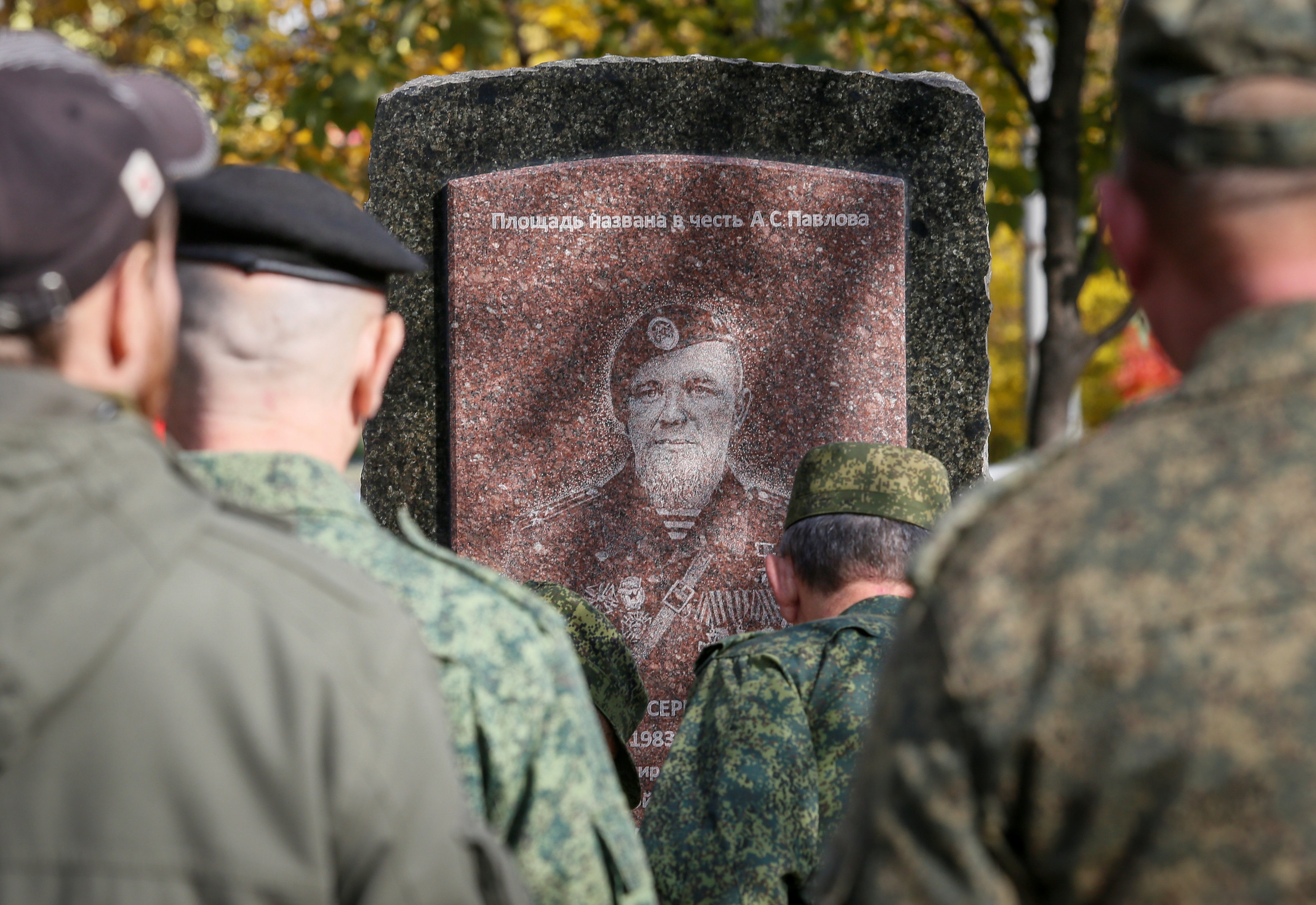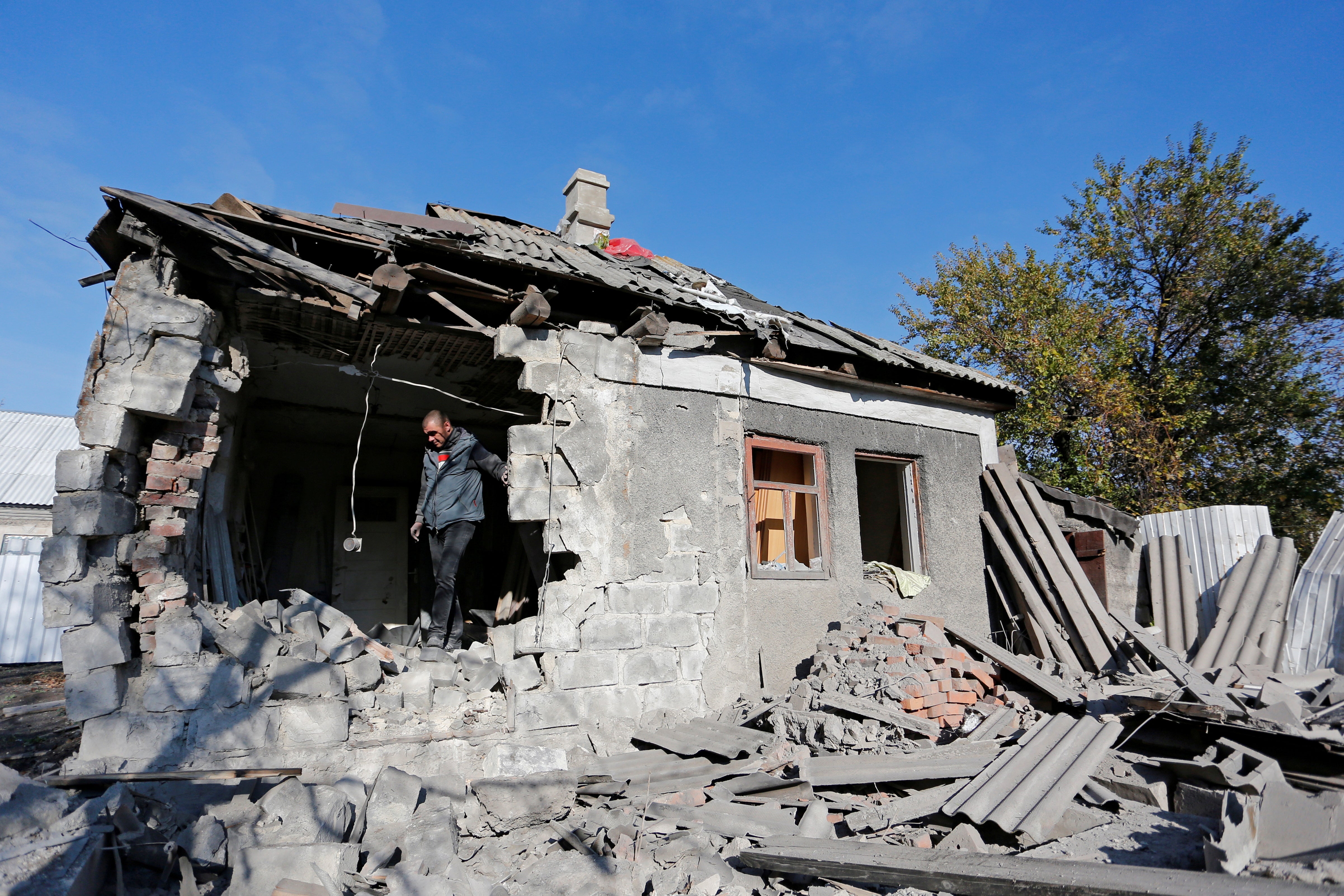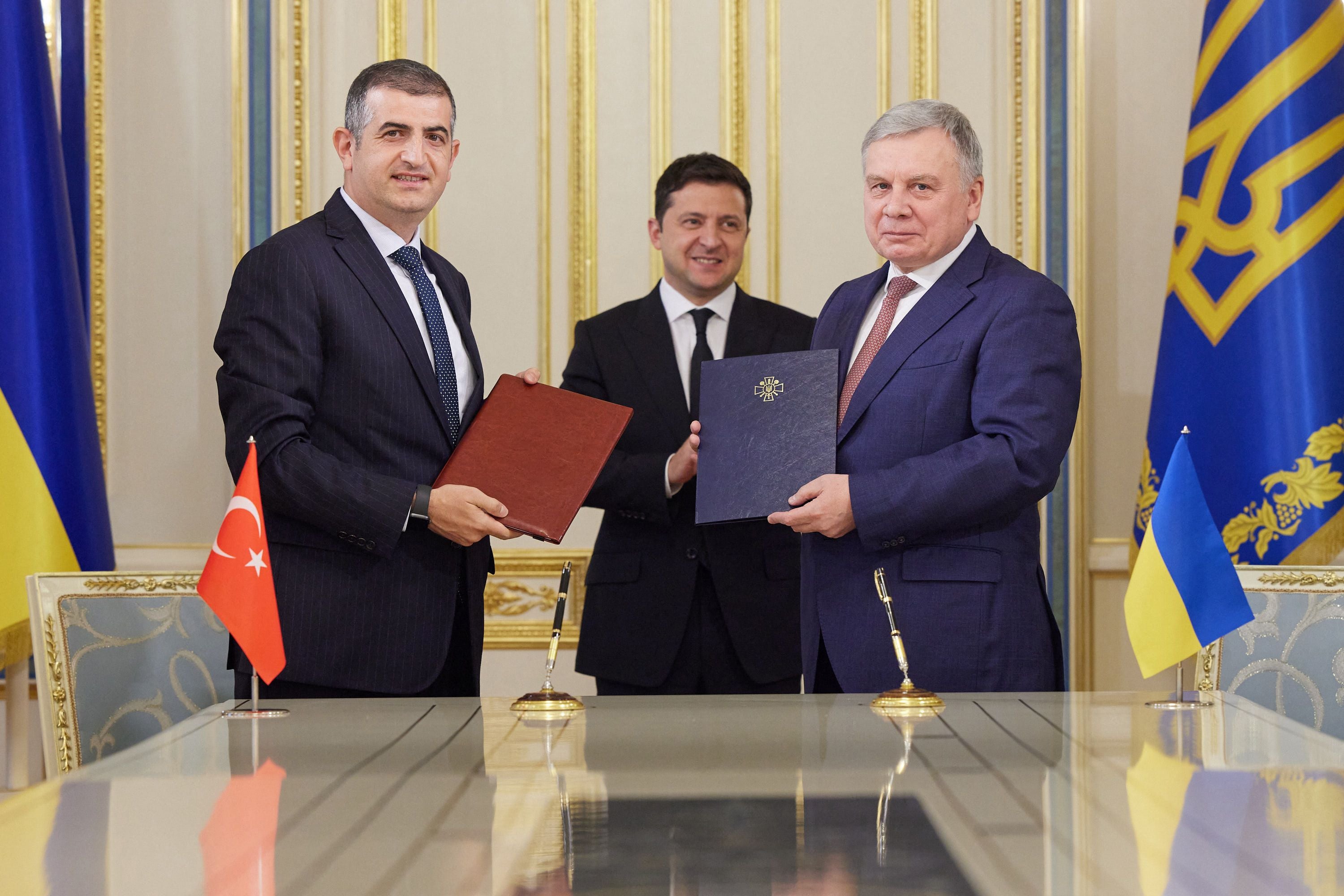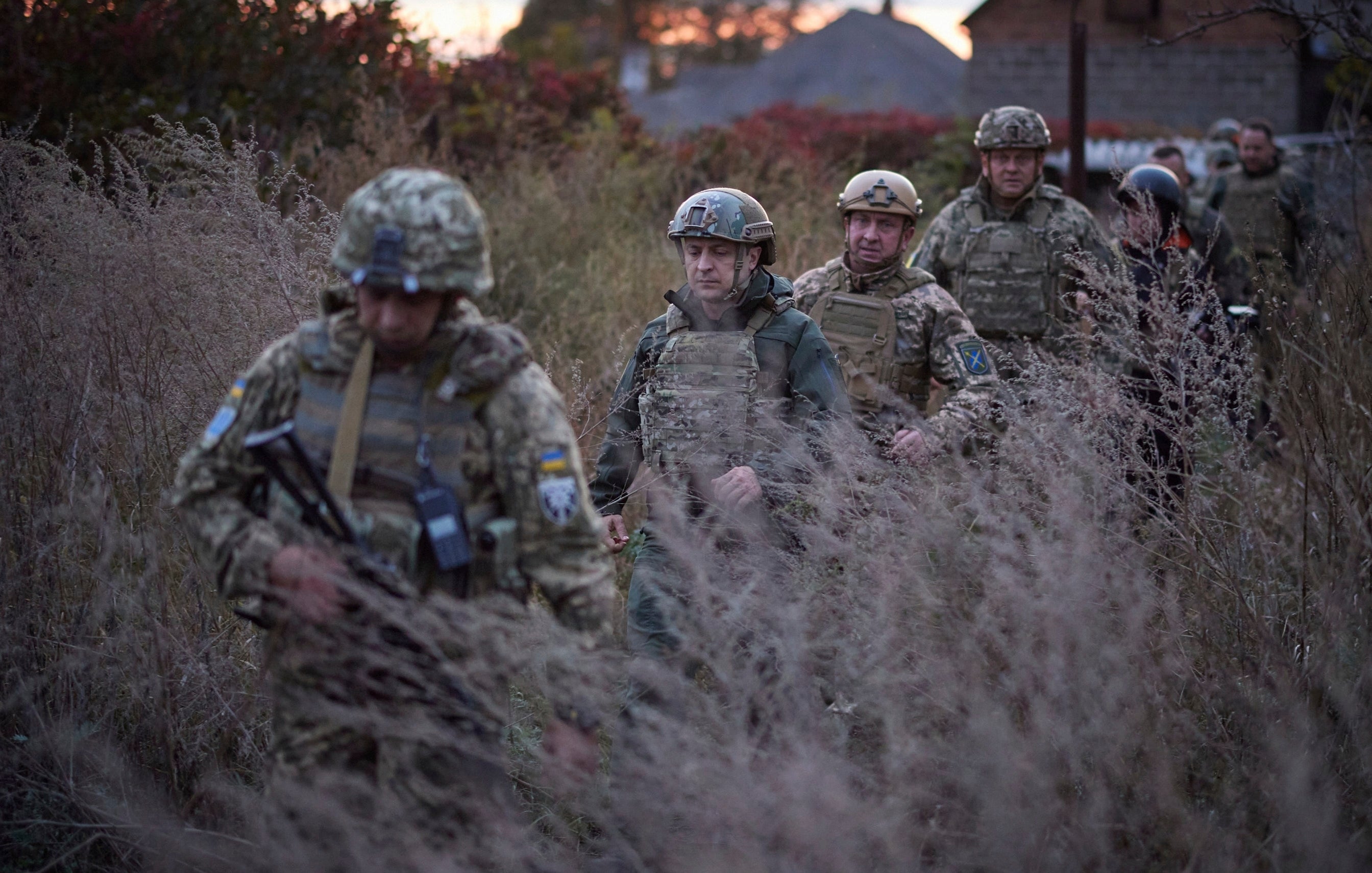Is Ukraine’s conflict heading into a new, bloody phase?
Moscow has declared it does not like the idea of Ukraine using drones against its proxies, and may be preparing a response, reports Oliver Carroll


A combatant with a Russian passport, captured by Ukrainians in no-man’s land on 13 October. Ukraine’s first employment of the Turkish-made Bayraktar assault drone two weeks later. Suspicious tank movements along the border. More soldiers. Heightened rhetoric. Warnings, veiled and unveiled.
Eastern Ukraine, in short, is once again in the news.
The tensions are of immediate significance to besieged locals in the Donbass. From a few incidents daily, reports of ceasefire violations now number in the hundreds. Behind every one of those statistics is at a risk to local life.
But there are worries the simmering seven-and-a-half-year war – one that has taken a chunk out of the largest nation in Europe – might be transforming into a new type of conflict.
The Ukrainian debut of the Turkish drones, used to great effect in Libya, Syria, and Nagorno-Karabakh, has certainly caused animation on both sides.
Yuri Butusov, an analyst considered close to Ukrainian authorities, described the Bayraktar’s arrival to the Donbass as a “historic day” for Ukraine. Kremlin propagandist Vladimir Soloviev called it a “challenge to Putin’s patience”. He wondered aloud whether the time had come to “completely destroy” Ukraine.
The use of drones in armed conflict is not new, and is not even new in the Ukrainian conflict. Drones, or unmanned aerial vehicles (UAVs), have been flying above conflict zones for decades. Both Ukrainian and Russian-backed sides have been using them since at least April 2014 – in the main as tools to do reconnaissance and direct unguided weapon systems.
What has changed with the new generation of drones is their ability to accurately deliver missiles themselves, and their abilities to avoid sophisticated air defence.

That, in theory at least, has the potential to return some level of air advantage to Ukraine, absent since summer 2014, when many of its planes were downed by Russian backed forces.
The Kremlin has made it clear that it does not view such a development positively, and has urged Turkey to pull out of an agreement to produce the technology in Ukraine.
Russia enjoys a close but complicated partnership with Turkey.
In September, at a meeting with Vladimir Putin, Turkish President Recep Erdogan made a commitment to buy more of Russia’s sophisticated S-400 air defence systems, to the consternation of NATO allies. But there are obvious tensions too. Turkey has pointedly declined to recognise the 2014 annexation of Crimea, supports Ukrainian territorial claims, and has criticised Russia’s treatment of the Muslim Crimean Tatar population.
This week, Russian regulators blocked the import of mandarins and lemons from Turkey in a return gesture. Ostensibly the development followed the “discovery” of banned pesticides in the Turkish fruit. But it would not be the first time Moscow has rushed to the weapon of health and safety. Moldovan wine, Georgian mineral water, and Turkish tomatoes have all found themselves subject to “emergency” sanitary measures at a time of geopolitical tensions.
Seth Frantzman, author of Drone Wars, a study of contemporary drone warfare, says Russia has reasons to feel vulnerable.

Once upon a time Moscow was at the front of UAV research. In the 1970s and 1980s, Soviet military scientists pioneered vehicles like the Tu-123 and T-141. Today, it is playing catch-up.
To date, drone hardware has lagged behind the technology employed by industry leaders US, China, Turkey and Israel. And its air defence and electronic capabilities – long considered traditional Russian strengths – didn’t offer convincing answers when deployed by General Khalifa Haftar’s armies against Turkish-made drones in Libya.
“Russia seems to be way behind in terms of using armed drones in conflict,” Frantzman says. “If Ukraine can get its hands on more of them, it could give them an edge like it gave the Azerbaijanis in Nagorno-Karabakh.”
The Russian army’s reliance on tanks and heavy weaponry make it particularly vulnerable from overhead, Frantzman adds. Armoured plating is not yet good enough to protect against advanced loitering munitions, which means Moscow will have to adapt to avoid humiliation.
“It’s not game over for Russia, but they will need to create better capacities in air defence and jamming,” the expert says.
Reports over the last week have suggested Russian jitters may be responsible for suspicious Russian troop movements along the western border.

Satellite imagery suggests that at least part of the 41th Combined Arms Army has not yet returned to its usual Siberian base following military exercises in Belarus. Part of that unit appears now to be based near the Belarusian border, about 180 miles from the north-eastern corner of Ukraine.
Other footage appears to show modern T-80U tanks from a unit usually based near Moscow lurking even nearer the Ukrainian border in Kursk.
Ruslan Leviev, whose Conflict Intelligence Team has monitored Russia’s military operations in Ukraine since 2014, says the appearance of new units near the border are of some concern. The 41st army, he notes, has a history of fighting in Idlib, Syria, and was recorded near the Ukrainian border at previous fighting peaks in 2015.
But it is an exaggeration to describe the changes as proof of a readying Russian military operation he believes. “It doesn’t even appear to be a direct response to the Bayraktar incident,” he says.

A European military source told The Independent they concurred: it is unclear what, if anything, the sequence of events means. On the one hand, the Ukrainians have signalled that the drone use was self-defence. On another, the Russian build-up is “too telegraphed and too obvious” for it to be part of a planned offensive.
Yet the risks of intentions being misinterpreted – wilfully or otherwise – are clear for all to see.
“This could trigger a much broader sequence of violence,” the source said.
“I would not exclude that this is part of the calculus by Moscow.”






Join our commenting forum
Join thought-provoking conversations, follow other Independent readers and see their replies
Comments